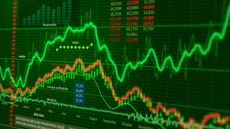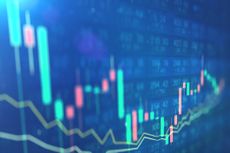Why Did the Fed Cut Rates to Near Zero?
The Federal Reserve's move won't impact the economy right away, but that's not the point

The Federal Reserve on Sunday announced a steep cut to short-term interest rates, as well as a commitment to buying several hundred billion dollars of longer-term debt to lower long-term rates.
Cutting rates to near zero and launching a so-called quantitative easing program are moves straight out of the Fed's playbook from the Great Financial Crisis.
The question, then: Why is the Fed using the same moves today when the economy is reeling for very different reasons? After all, the financial system is seizing up because of a demand shock, not a credit crisis. Easy money in the form of cheap mortgages and car loans won't make it safe for folks to venture out of their homes.

Sign up for Kiplinger’s Free E-Newsletters
Profit and prosper with the best of expert advice on investing, taxes, retirement, personal finance and more - straight to your e-mail.
Profit and prosper with the best of expert advice - straight to your e-mail.
But that's not what the Fed was trying to achieve when it dropped the Fed funds rate, its benchmark interest rate, by a full percentage point to a range of 0% to 0.25%.
Rather, in the words of University of Oregon economist and Fed expert Tim Duy, "It was time to go big or go home."
The Fed already took steps to stabilize the government bond market last week when it wasn't functioning well because of a lack of liquidity. (Liquidity allows market participants to buy or sell securities when they want at close to the prices they want.) The central bank made $1.5 trillion in short-term loans available to bond dealers and launched a wave of Treasury purchases.
By following those initiatives with a massive rate cut and QE program, the Fed sent a critical message to investors, says Duy: "The aim is to act as a buyer of last resort following the deterioration in liquidity across the Treasury market. The Fed basically signaled as clear as it could that it was ready to backstop the financial markets."
"I am thinking (Fed chief Jerome) Powell is not going to let another Lehman Brothers happen on his watch," Duy adds.
Powell admitted Sunday night that the rate cuts wouldn't have an impact on the economy at this time. That's not the intent. Monetary policy is limited in what it can achieve when the issue is a demand shock.
What will help right now is accommodative fiscal policy. In plain English, that means the president and Congress need to step up and approve spending programs that can help blunt the impact of this disaster. Loose monetary policy can support fiscal policy by lowering the government's borrowing costs with ultra-low interest rates. For example, the yield on the 10-year Treasury note stands well below 1%.
"In the near term we really need fiscal stimulus," says Duy. "The Fed has paved the way, but they can’t make Congress and the president follow their lead."
The Fed's rate-cutting actions aren't meant to have much visible impact now. They're intended to help us rebuild once the war against COVID-19 is over.

Dan Burrows is Kiplinger's senior investing writer, having joined the august publication full time in 2016.
A long-time financial journalist, Dan is a veteran of SmartMoney, MarketWatch, CBS MoneyWatch, InvestorPlace and DailyFinance. He has written for The Wall Street Journal, Bloomberg, Consumer Reports, Senior Executive and Boston magazine, and his stories have appeared in the New York Daily News, the San Jose Mercury News and Investor's Business Daily, among other publications. As a senior writer at AOL's DailyFinance, Dan reported market news from the floor of the New York Stock Exchange and hosted a weekly video segment on equities.
Once upon a time – before his days as a financial reporter and assistant financial editor at legendary fashion trade paper Women's Wear Daily – Dan worked for Spy magazine, scribbled away at Time Inc. and contributed to Maxim magazine back when lad mags were a thing. He's also written for Esquire magazine's Dubious Achievements Awards.
In his current role at Kiplinger, Dan writes about equities, fixed income, currencies, commodities, funds, macroeconomics, demographics, real estate, cost of living indexes and more.
Dan holds a bachelor's degree from Oberlin College and a master's degree from Columbia University.
Disclosure: Dan does not trade stocks or other securities. Rather, he dollar-cost averages into cheap funds and index funds and holds them forever in tax-advantaged accounts.
-
 It’s Tax Day: Is the Post Office Open Late?
It’s Tax Day: Is the Post Office Open Late?Tax Filing Tax Day is here and some people need to mail their federal income tax returns.
By Kelley R. Taylor Published
-
 Need to Build an Emergency Fund? Seven Steps to Get There
Need to Build an Emergency Fund? Seven Steps to Get ThereHaving a safety net can mean peace of mind on top of being able to maintain your lifestyle if a financial emergency strikes.
By Justin Stivers, Esq. Published
-
 Stock Market Today: Dow Sinks 475 Points After JPMorgan Earnings
Stock Market Today: Dow Sinks 475 Points After JPMorgan EarningsStocks sold off sharply Friday on disappointing bank forecasts and speculation that Iran is planning an attack on Israel.
By Karee Venema Published
-
 Stock Market Today: Nasdaq Leads as Magnificent 7 Stocks Rise
Stock Market Today: Nasdaq Leads as Magnificent 7 Stocks RiseStrength in several mega-cap tech and communication services stocks kept the main indexes higher Thursday.
By Karee Venema Published
-
 Stock Market Today: Stocks Tumble After a Hot Inflation Print
Stock Market Today: Stocks Tumble After a Hot Inflation PrintEquities retreated after inflation data called the Fed's rate-cut plans into question.
By Dan Burrows Published
-
 Stock Market Today: Stocks End Mixed Ahead of Key Inflation Reading
Stock Market Today: Stocks End Mixed Ahead of Key Inflation ReadingEquities struggled before tomorrow's big Consumer Price Index report.
By Dan Burrows Published
-
 Stock Market Today: Stocks Closed Mixed in Choppy Trading
Stock Market Today: Stocks Closed Mixed in Choppy TradingVolatility returned as market participants adjusted their expectations for rate cuts.
By Dan Burrows Published
-
 Stock Market Today: Stocks Rally After Blowout Jobs Report
Stock Market Today: Stocks Rally After Blowout Jobs ReportStocks soared into the weekend as investors brushed off strong payrolls data and lowered rate-cut expectations.
By Dan Burrows Published
-
 Stock Market Today: Stocks Swing Lower as March Jobs Report Looms
Stock Market Today: Stocks Swing Lower as March Jobs Report LoomsThe main indexes turned negative in mid-afternoon trading as all eyes turned to tomorrow morning's key employment update.
By Karee Venema Published
-
 Stock Market Today: Stocks End Mixed After Powell Speech
Stock Market Today: Stocks End Mixed After Powell SpeechIntel and Walt Disney were two of the worst Dow Jones stocks Wednesday.
By Karee Venema Published